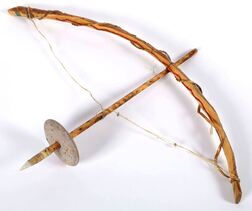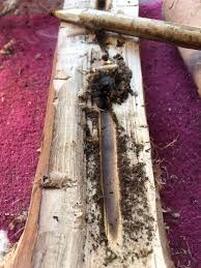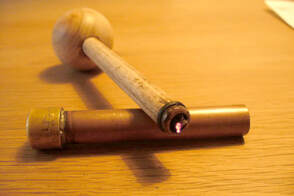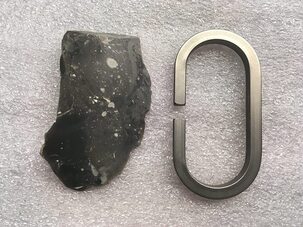|
Whether you are trying to keep warm or hanging with your friends and family, a campfire can start using primitive fire-starting methods. There are many ways to start a fire using these methods. These include the hand drill method, the two-man friction drill method, the fire plough method, bow drill method, flint and steel method, and many more. Hand Drill The hand drill method is the simplest of methods listed, but keep the high speed required to start the fire can pose a challenge to some. This is due to only the hands controlling the rotation of the spindle. Even though it can be challenging, this method works best for dry climates. To start the hand drill method, cut a V-shaped notch on the board going to be used as the base for your fire or called the fireboard. Then start a small depression adjacent to the notch using a rock or knife tip. Place a dry piece of bark under the notch to catch the ember. Place a 2-foot spindle in the depression, and while maintaining pressure, roll it between the palms of your hands running them quickly down the spindle in a burst of speed. Repeat this motion until the spindle tip glows red and an ember is formed. The last step in using the hand drill method is to tap the fireboard to deposit the ember onto the bark, the transfer it to tinder bundle and blow on it to form a flame. Two-man Friction Drill  The two-man friction drill method used the same steps as the hand drill method, the only difference being two people controlling the ration of the spindle. This is done by one person pressing down on the spindle and the other using a thong or shoelace to rapidly rotate the spindle. In both methods, using a wood that has low ignition point makes all the difference. The best options are dry yucca stalks, cottonwood, cedar, aspen, pine, fir, and basswood. Fire Plough The fire plough method can much easier than the drill method. It does require some stamina but is greatly effective. Tom Hanks made this method famous in the movie Cast Away after his attempt at the hand drill method proved to be too difficult for him to execute in a such tired state. To start the fire plough method, gather kindling, a piece of soft wood about two feet long, no more than six inches wide, and an inch thick (if you can mark it with your fingernail it is soft enough), and a hard stick about a foot long and half an inch thick (no mark should show in when trying to indent). Kneel over the soft piece of wood. Fire Piston Sometimes called a fire syringe or a slam rod fire starter, this fire-starting device works when air gets extremely hot under high pressure. A good example of this would be the heat that is created when a person uses a bicycle pump. Unlike the pump, when the air in a fire piston is compressed, it is done so quickly and efficiently that it can reach a temperature more than 800 degrees Fahrenheit. At this temperature it is hot enough to ignite the tinder that is placed in the end of the piston which is hollowed out and able to accept it. Examples used throughout history of the tube used would include hardwood, bamboo, or even horn. It would have to be closed on one end, very smooth inside and accurately bored. Extreme care is taken in the creation of the associated piston. A gasket is made from wound thread, fiber or something leather which ensures a proper seal for successfully creating the compression. Then the gasket is greased to help with the seal and to allow free travel of the piston. The walls of the bore must be perfectly straight and polished smooth. Flint and Steel, and Ferro Rods  One of the most known ways to start a fire, the flint and steel method works by striking the softer steel against the harder flint which produces sparks to flame your fire. Most kits come with an easy-to-use curved steel striker along with the flint and steel, although with some practice you can produce sparks by using the back of a carbon-steel knife blade, an old file, or an axe head. (Stainless-steel knives are usually too hard to shave sparks from.) To use this method, grasp the shard of flint between your thumb and forefinger with a sharp edge protruding an inch or two. Clamp a piece of char cloth or a handful of tinder fungus under your thumb that is holding the flint. Grasp the back of the striker with your other hand and strike a glancing blow against the edge of the flint using a quick wrist motion. If an axe is being used, hold the head still and sharply strike the flint near the blade. This is where the steel is hardest. This motion causes molten sparks from the steel and they will fly off and eventually be caught by an edge of the char cloth made up of cotton, linen, flammable plant fibers, bark tinder, cattail fluff, some shelf fungi, or rotten wood, causing it to glow hot. Finally, carefully fold the cloth into a tinder nest and gently blow on it until it catches flame.  Using a ferro rod is much like using the flint and steel method. The real only difference is the ferro rod takes the place of the flint. Ferro rods are made of cerium. Lanthanum, iron, praseodymium, neodymium, and magnesium thus creating a higher temperature, eliminating the need for char cloth or tinder fungus. At Black Bag Resources we offer multiple, ready to use, primitive fire-starting tools. Weather you are ready to try your hand at a hand drill or need the reliable method of a flint and steel, you are ready to start your journey of primitive fire starting.
0 Comments
Your comment will be posted after it is approved.
Leave a Reply. |
Black Bag Resources Blog
News, projects, products, and tips from the owner. Archives
September 2022
Categories
All
|


 RSS Feed
RSS Feed